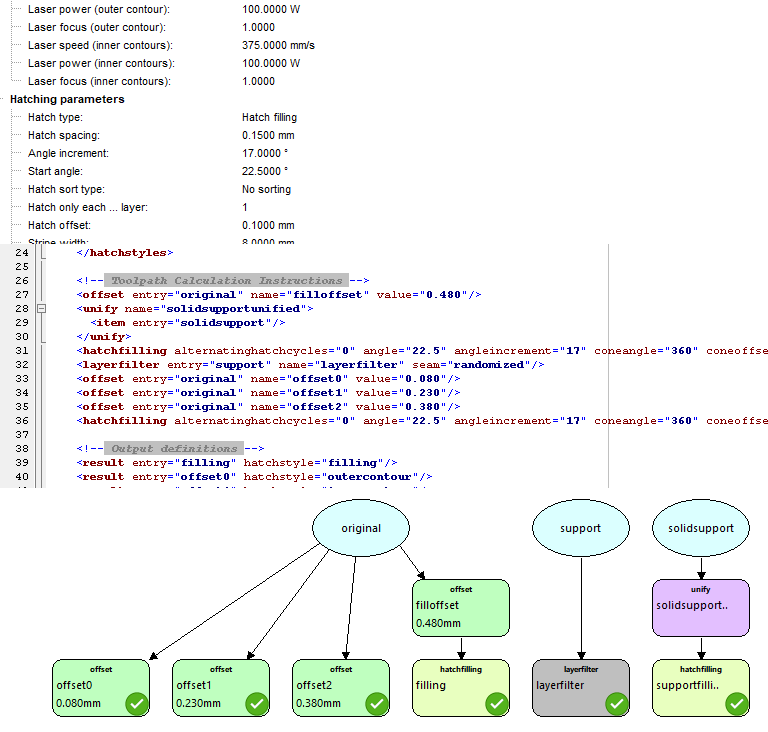Methods to define how contour and hatch paths for beam-on-powderbed-style machines are generated in Netfabb
Jump to:
Introduction
To define build strategies, meaning which algorithms to use, what values their parameters have, and how they are chained together to generate the toolpaths, Netfabb's native support for powderbed-style machines uses XML. This XML definition is exposed in three variants:
| Type | User-definable | Can be converted to | |
|---|---|---|---|
| Simple | Exposes a selection of parameters from the XML definition with drop-downs and input fields. The actual selection and arrangement of algorithms is hidden. | No | No |
| Programmable | Exposes the XML definition code for editing in the built-in text editor | Yes | Yes |
| Diagram | Visualizes the XML definition in the built-in visual programming editor | Yes | Yes |
(EBPA, or Encrypted Build Processor Archive, is a fourth method that is similar to Simple in how it looks but is defined in JavaScript using Autodesk® Advanced Toolpath Utility for Netfabb® and is not treated here.)
The types Programmable and Diagram can be converted to, and between, so that you can observe how changes in code or in visual arrangement are reflected in the respective counterpart. For Simple, this is a one-way conversion; however, any customisation you make to a simple-type configuration is reflected in the generated XML code.

The same strategy in Simple form (excerpt), in XML code (excerpt), and in graphical visualization (side panel for configuring not shown)
Ultimately, one or more build strategies, together with build-global settings such as tray settings and values to generate a build time estimate, form a machine configuration.
Default configurations are stored in Netfabb, custom configurations are generated as XML files at %APPDATA%\netfabb\. Custom configurations using an EBPA are stored in XML, too, embedding the EBPA next to global and per-strategy parameter values.
Usage with machines
Build configurations are stored separate from machine models (example of a model: SLM Solutions SLM®125), but remain filtered in access by machine model, and regardless whether the associated My machines record was created before or after the build configuration for that particular model.
